In the very early days of musical playback, as far back as the late 1950’s and early 1960’s, most music devotees bought a console audio system. These units were the ultimate all-in-one. A single, large cabinet housed the stereo power amp, preamp, audiophile turntable, tuner, and bookshelf speakers. Raise the lid, put on a stack of records, and you were set for hours of music.
Not especially satisfied with the resolution, dynamics, and/or overall performance of console stereo systems, many audio enthusiasts sought a better solution. Manufacturers listened, and in short order, there were systems containing an amp, preamp and tuner. Connected to that was predictably a turntable, or in mostly rare instances, a reel-to-reel player. Cassette decks and Compact Disc players soon followed. Speakers placed somewhere nearby in the room often completed the system. Manufacturers of really upper-end, higher-priced gear decided to separate everything, and now systems were incredibly modular.
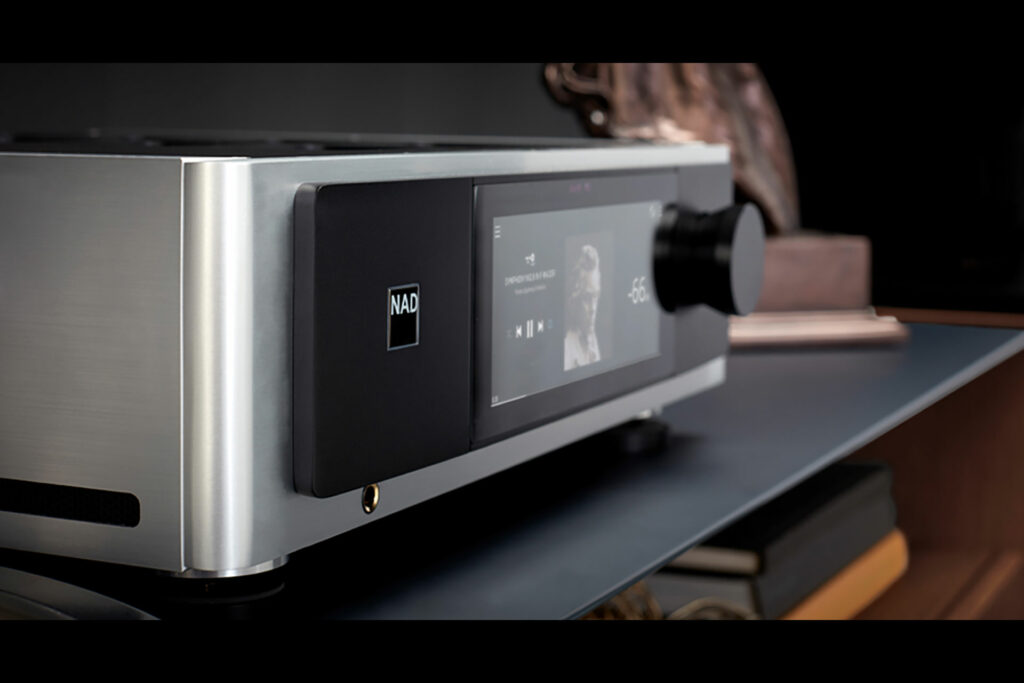
As the proliferation of component stereo systems began to dominate the audiophile hobby, integrated systems became less prominent. Integrated componentry sort of languished on the sidelines as the unfortunate kid with whom no one wanted to play.
Not so today, as integrated and one-box audiophile solutions have almost come full circle and the gap between everything in separate components as compared with one-box or two-box solutions has dramatically narrowed. Today, integrated systems have come a long, long way and are now finding their stride both for those starting in the hobby, as well as advanced users seeking a simpler but ultra-high-performance solution.
What Does an Entry Level Component Audiophile System Look Like Today?
I am not aware of a time where audio systems with better-than-expected sonics are available at such an affordable purchase price more than today. For instance, for about $2,000, a system consisting of, say, a $650 BlueSound Node or Sonos Port streaming hub, a budget turntable for around $400 (usually including a cartridge), a Chi-Fi integrated amp for probably about $200 (or less in the case of the S.M.S.L here), and then add in a set affordable yet respectable speakers for well under $1,000 and you are looking good. Finishing things off with another $200 to $300 for cables will yield a first rate, entry-level audiophile starter system. You can play LPs and stream almost every song ever recorded with a subscription to any number of CD-quality sites – Tidal and Qobuz being the most popular with audiophiles. And you will have a much better system than something from a huge, big box retailer who sells everything from refrigerators to riding lawnmowers. Best of all, when the spend is increased to, say, $5,000, now the availability of some really wonderful equipment raises the bar on sonics to a surprising level.
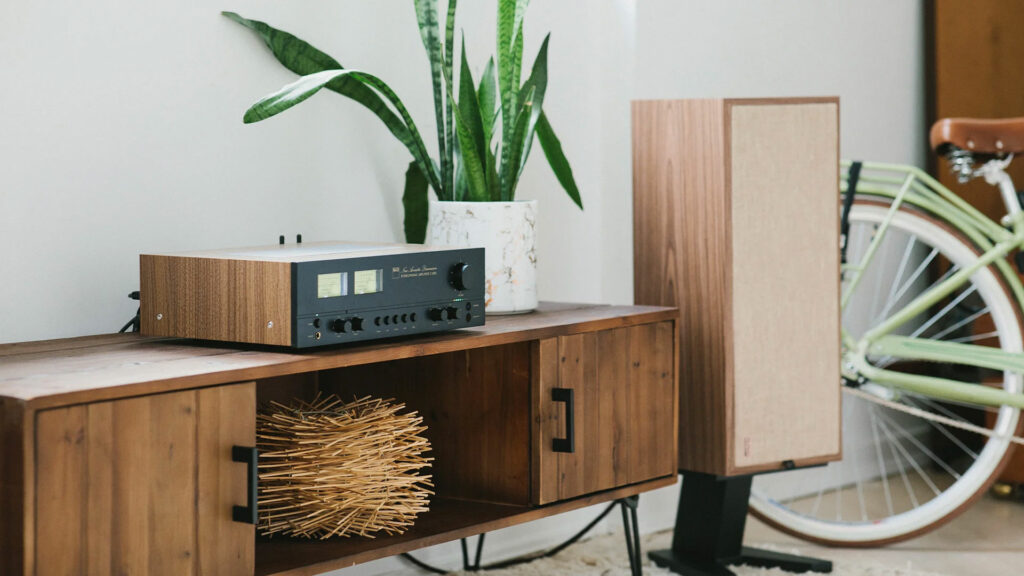
So How Do Today’s All-in-One Audiophile Solutions Stack Up to Separate Components?
An all-in-one component is exactly what the term describes: an audiophile solution with multiple functions in one chassis. For quite a few years, these systems were called “lifestyle” because of how they were used, but today they pack much improved audiophile capabilities. Many homeowners wanted a product where everything was in one box, could be inconspicuously placed in a great room or den, and could do just about anything AV related. Such systems were intended to play music, watch TV, play a DVD and not be seen while doing so. About the only connections were for speakers, a TV, a turntable and a CD player.
Today, all-in-one componentry has become an increasingly popular choice for audiophiles who are interested in high-quality musical playback. There are many options at a wide variety of price levels. For instance, the NAD C 3050 has an excellent internal Hypex amp, a suitable internal stereo preamp, a streaming hub, a very capable internal DAC, a phono stage, HDMI connectivity, subwoofer output with bass management, room correction, and A/B speaker connections for less than $1,500 – all in. The C 3050 even sports a pretty cool retro-inspired look with two meters to watch while you listen, but make no mistake: this isn’t any retro component in terms of performance. It is a $1,400 bleeding-edge audiophile solution that delivers on all fronts for a price that most audiophiles can afford.
Devialet, the French audiophile manufacturer, offers a more serious level of product with systems ranging in price from $6,500 up to as much as $35,000. These systems offer a range of capabilities and even have software to optimize playback across a variety of mediums. All of the company’s amplification products are hybrid Class D and many audiophiles love what they can do. Others have the need for more sophisticated, more powerful solutions for that kind of investment.
NAD’s M33 is a $4,999 all-in-one, no-compromises audiophile component featuring digital-to-analog conversion, room correction, streaming, preamplification, amplification, and more. It has internal upgrade cards to make provisions for future technologies that as yet are still just a dream. This is yet another very suitable just-add-speakers audiophile component that can make some very serious sound even in acoustically difficult rooms.
We mentioned the BlueSound PowerNode Edge for a mere $650 earlier. The SVS Prime Wireless Pro SoundBase is another highly affordable integrated amp on steroids for only $699 Both of these solutions are simply excellent places to get started with the audiophile hobby with, again, another just-add-speakers solution that is well under $1,000 for your electronics.
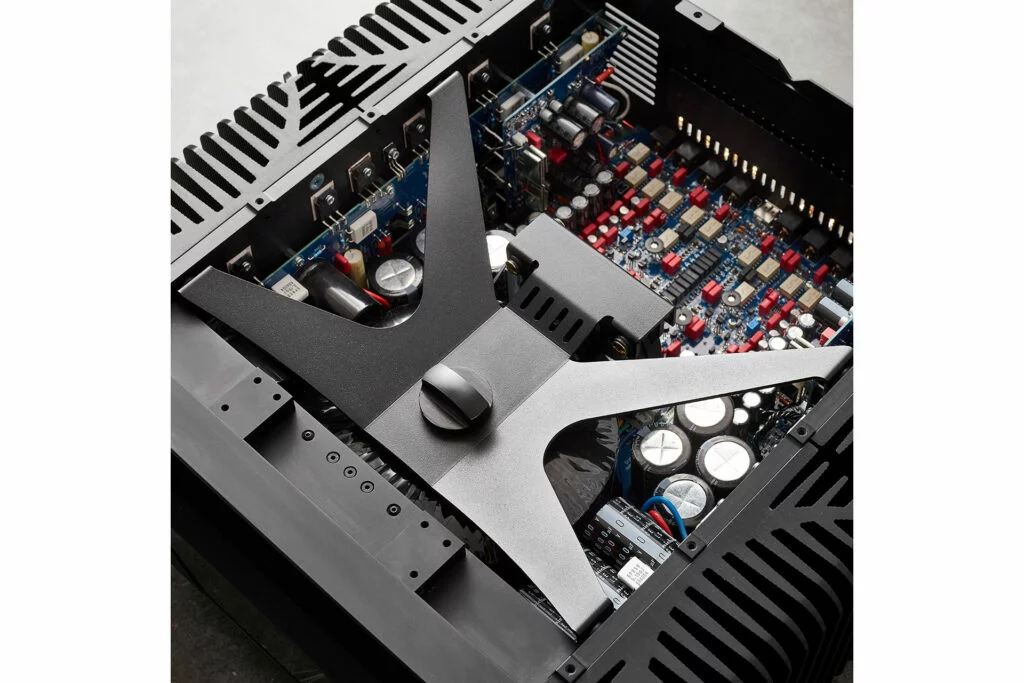
Are the Luxe Audio Expensive Brands Getting in on the All-in-One Component Trend?
It would seem the answer to that question is a resounding “yes.” Many lofty audiophile companies whose product lines were historically centered around separate components are now offering one-box or one-box-plus solutions. Let’s take a look at some of the options out there today.
Uber-expensive Swiss audiophile stalwart CH Precision has the I1 Integrated, which, like most of the company’s entire product line, has the basic functions and upgrades for a complete package. Prices for this unit start at about $40,000 and go up from there based on final configuration. Our publisher got a chance to hear this Swiss-made all-in-one at a local, Southern California high-end audio salon and had nothing but good things to say about the sound.
Jeff Roland Design Group actually has two products in this category: the world-class Daemon costing about $40,000 and the somewhat more-affordable Continuum S2 at about $12,000. Both offer a wide range of connection and playback options. Jeff’s designs have passed the test of time in the world of very high-end while Jeff focuses on the latest technology trends such as other Class-D amp designs, as well as all-in-one components.
Dutch manufacturer Gryphon, a company whose product line is very, very high-performance audio, recently introduced the Diablo 333 integrated amplifier. Retail prices start at $24,900. Adding the phono stage module will cost an additional $5600 and the DAC module adds $7,000 more. All in, just under $40,000. I reportedly have this product coming in for review later in 2024, which is exciting to say the least.
What this points to is the undeniable confirmation that, at least for now, integrated and all-in-one solutions are a very viable choice. It’s a product category easily capable of pleasing sonics, the ability to be housed somewhere other than a dedicated audio room, with pricing for just about any budget.
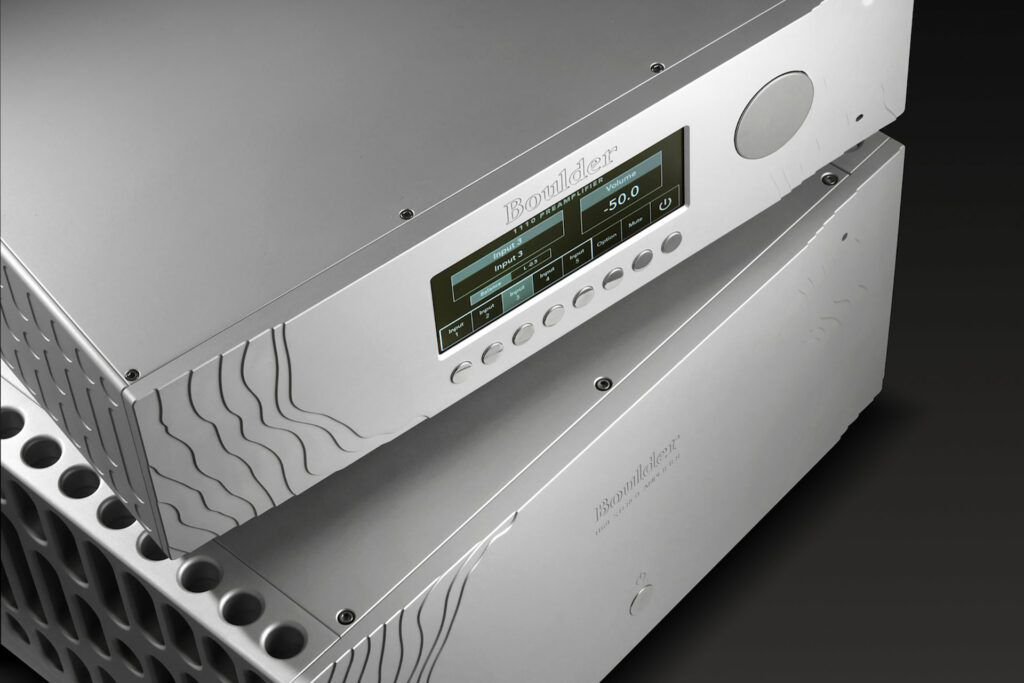
How Else Does an Integrated or One-Box System Compare to Separates?
Beyond purchase price, integrated and one-box components have some other relevant benefits. For one, the elimination of many of the cables snaking their way around a system comprised of all separate components. Most of the interconnects linking one box to another are not used in an integrated setup.
There are those who feel systems with multiple components in the same chassis excel sonically because of a much shorter signal path – again, through the elimination of separate cables. Very often in budget systems, say $2,000 or less, even a couple of hundred dollars for cables may make the total cost unreasonable.
Another claimed benefit is because all the engineering is devoted to one component by one manufacturer, the overall product is better made and performs equally, if not better, than a system of separates. A single, large power supply can often nicely suit the needs of an all-in-one component, not to mention a separate component, creating a possible performance boost or at least some economic economies of scale.

What Are the Benefits of a System of Separate Components?
It should not come as a surprise to learn not all audiophiles have jumped on the one-box solution bandwagon. Clearly, these systems are not for everybody, even if they have gotten better in recent years. Many of these skeptics will point out that in any system where there is one power supply for everything, as is the case in most one-box gear, the potential for horrendously increased noise and distortion is a very real concern. Add to that the sharing of capacitors and circuit boards may cause sonic degradation on a noticeable scale. It is therefore always advisable to utilize separate components in separate housings where efforts to ameliorate sonic problems are more easily addressed.
Another benefit to separates is the ability to replace or upgrade one single component and readily assess any improvements the new gear may render. Likewise, if one component malfunctions it may be individually repaired or replaced. In a one box unit, for the most part, the entire system must be either repaired or replaced.
Then there are the harder-to-quantify differences. In a system of separates, any possibility of crosstalk is minimized as opposed to, say, amps and preamps in the same enclosure sharing power supplies and capacitors. And a separate component is principally engineered for one single task. Because all engineering requires compromises, it is often felt engineers designing integrated or one-box components must make concessions to meet space, design, overall functionality, and endpoint pricing goals. Separate components are not nearly as affected by such restraints.
Perhaps the most debated discussion surrounds cables. It has been said cables cannot, now or ever, improve the sonics of an audio system. A cable, at best, will not make things worse. I suspect these opinions come from those who place little value or belief in cables as a whole. For those who do place a high value in cables, their outlook is, not surprisingly, quite different.
It is reasoned that cable perfection is where the signal is not changed in any way whatsoever. The signal exits the cable exactly as it entered it. Unfortunately, such performance is quite idealistic. Capacitance, resistance, and inductance all play a part in how well cables work. However, an alternative viewpoint is the less the signal is damaged by a cable, the better the system will sound. The universal goal of “do no harm” is abundantly applicable.
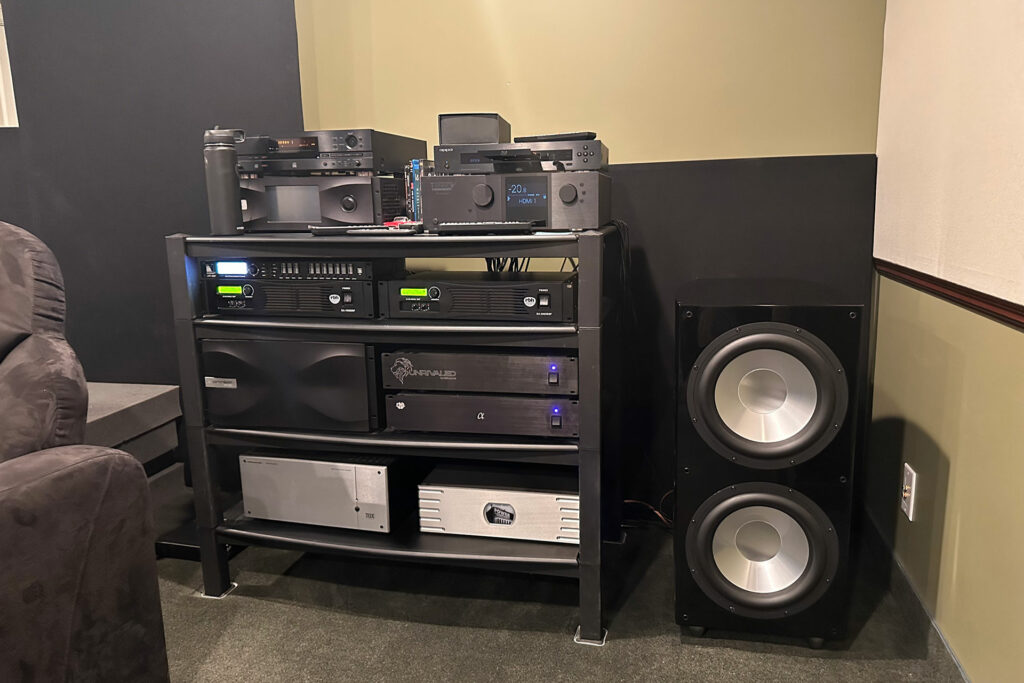
What’s the Bottom Line on All-in-One Audiophile Components?
Economics play a serious role in answering this pressing question. For a nominal investment, anyone who wants a really nice-sounding system can have one for about $2,000 or less.
Spending a little more, say up to about $5,000, and the level of sonic excellence markedly increases. What that level of spend will yield is a system with a higher level of sonics and, quite likely, improved features. In fact, most of the all-in-one components will sound magnificent when paired with the correct speakers.
For those with the means to curate a system comprised of all separate components, the path will quite likely be more expensive. Will a system of separates costing $50,000 noticeably and significantly outperform an equally priced integrated system and a quality set of speakers? That’s pretty hard to say. It winds up little more than a matter of opinion.
When, however, the discussion centers around systems whose cost is six figures and up, there is really not that much to say. A world class, best-of-the-best system of separates in a dedicated audio room with professionally designed room treatments is quite simply unbeatable. Is there a significant cost for such a system? You betcha. Those costs can be prohibitively high. But once done, a one-box stereo system doing everything will have an extremely difficult time measuring up.
Perhaps the best news is for the first time really ever, a very nice, full featured, surprisingly remarkable sounding audio system may be had for an affordable cost. Such systems enable young people or anyone on a limited budget to get started in the hobby. As fortunes change, there is a very clear upgrade path. Such convenience has not always been the case. Now more than any time in the past, the audiophile hobby is open to just about everyone.
All it takes is a little homework and a demo or two, and high-quality sonics may be easily obtained and enjoyed for many years to come.
Where do you stand on an all-in-one audiophile solution versus separate components in today’s audiophile market? We want to hear your feedback below in the moderated comments.



